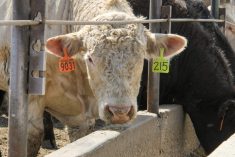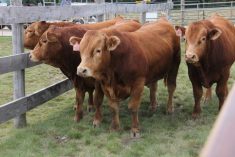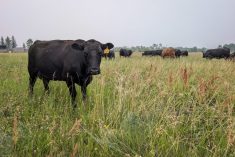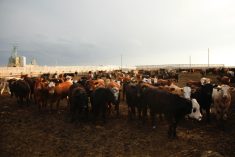Cattle producers using provincial pastures heading into the final three years of the Saskatchewan Pastures Program (SPP) will get the first chance at leasing them.
The province announced in March it would wind down the SPP, kicking off a public consultation process. Based on those consultations, the province confirmed Thursday it will grant the 50 provincial pastures’ current patron groups the first option on 15-year leases for the sites.
The pastures, which combined cover about 780,000 acres, will transition out of the program over the next three years, starting with 13 in the province’s northwest, for the 2018 grazing season.
Read Also

JBS profit falls amid still-challenging US market environment
JBS, the world’s largest meat company, reported a net profit fall in the third quarter in spite of a rise in global net sales amid a still-challenging beef market environment in the U.S., according to an earnings statement on Thursday.
Another 19 pastures in the northeast and northwest will move out of the program in the 2019 season; the remaining 18, in the northeast and south, will make the transition by the 2020 season.
Leases in these cases will be similar to those offered to patrons of federal community pastures, the province said. The federal pastures have been moving to patron control since 2012.
If “interested parties” such as environmental agencies, municipalities or First Nations want to work with patron groups that can’t lease the land on their own, those organizations may partner with patrons to obtain the 15-year lease.
The leases will also allow continued access for hunting, including the “exercise of rights and traditional uses” by First Nations and Metis communities, the province said.
Pastures slated to move out of the SPP after the 2017 grazing season include Antelope Park, Beacon Hill, Bluebell, Cabana, Fairholme, Fielding, Grill Lake, Hafford, Hatherleigh, Lizard Lake, Makwa, McDonald Creek and St. Walburg.
The pastures remaining in the SPP to the end of the 2018 grazing season include Barrier Lake, Bertwell, Big River, Cookson, Crystal Springs, Donsland, Jackson Lake, Lady Lake, Marean Lake, Mistatim, Pathlow, Pleasantdale, Rosthern-St. Julien, Smeaton, Smoky Burn, Swan Plain, Sylvania, Whitebeech and Wingard.
The remaining pastures, which stay in the SPP to the end of the 2019 season, include Arena, Beechy, Calder-Togo, Dixon, Good Spirit, Grainland, Insinger, Mankota, Matador, Meyronne, Midale, Millie, Old Wives, Pipestone, Regina Beach, Scout Lake, Strawberry Lake and Valjean.
“This approach will ensure continued grazing opportunities and environmental stewardship of the land,” provincial Agriculture Minister Lyle Stewart said Thursday.
The SPP, which dates back to 1922, was set up to help the ag industry diversify by assisting small cattle producers, but “the agriculture industry has evolved, as have the needs of producers, and the program is no longer necessary,” the government said in March.
In 2015, the province said, the SPP supported about five per cent of the provincial cattle herd. Based on 2011 census data, about 12 per cent (1,300) of Saskatchewan cattle producers use the SPP.
The province’s consultations on SPP pastures found “broad support” for granting the first option to existing patrons, while the “majority” of participants opposed the idea of selling off or subdividing SPP lands.
The Agricultural Producers Association of Saskatchewan (APAS) said in a separate release Thursday it was pleased the province heeded its recommendations for winding down the SPP.
“We are pleased to see that the consensus of producers and the public are reflected in the announcement, and that it was made early to allow patrons to plan for the future,” APAS president Todd Lewis said.
However, he added, the group hopes to have “further conversations on ways the pastures can continue to support access by beginning and young producers,” noting the SPP has until now “provided new entrants and mixed farmers with grazing opportunities that otherwise might not be available.” — AGCanada.com Network













